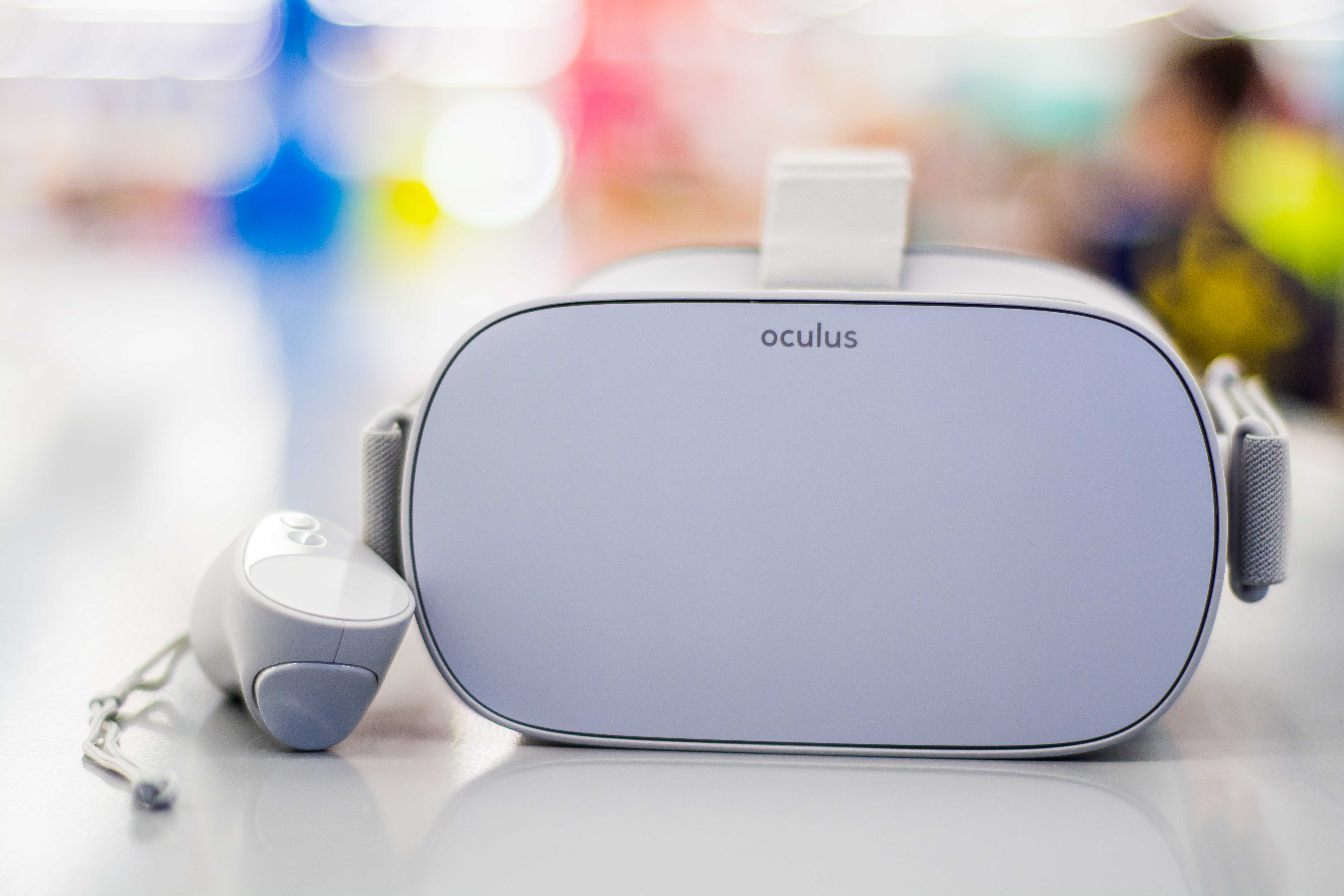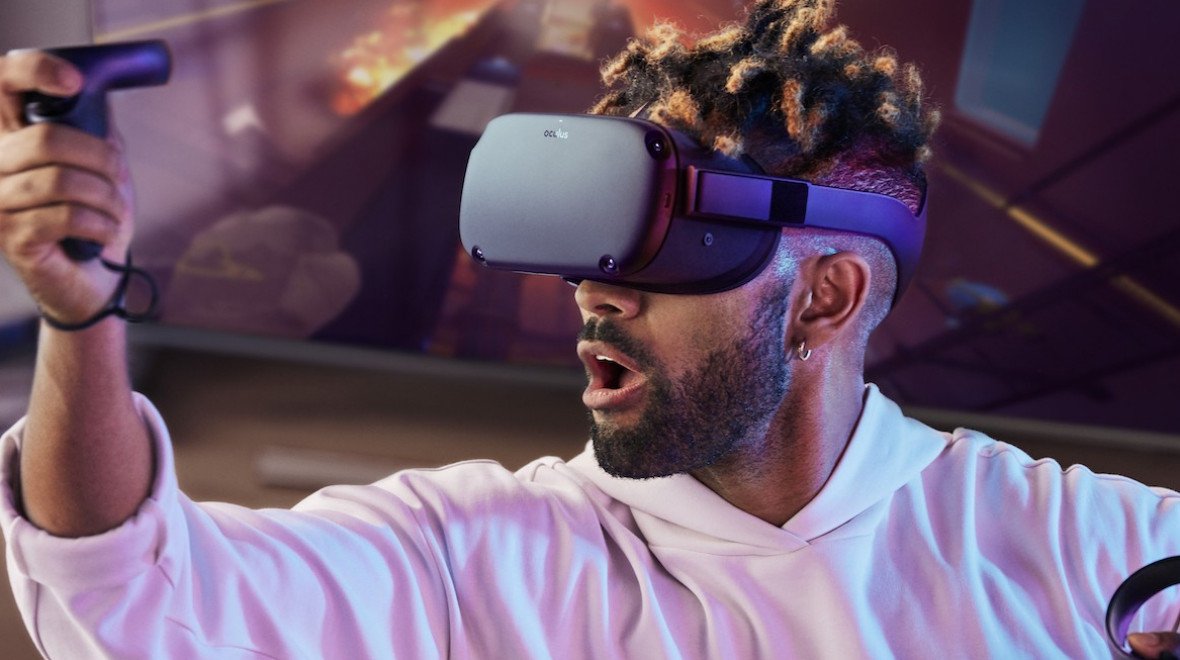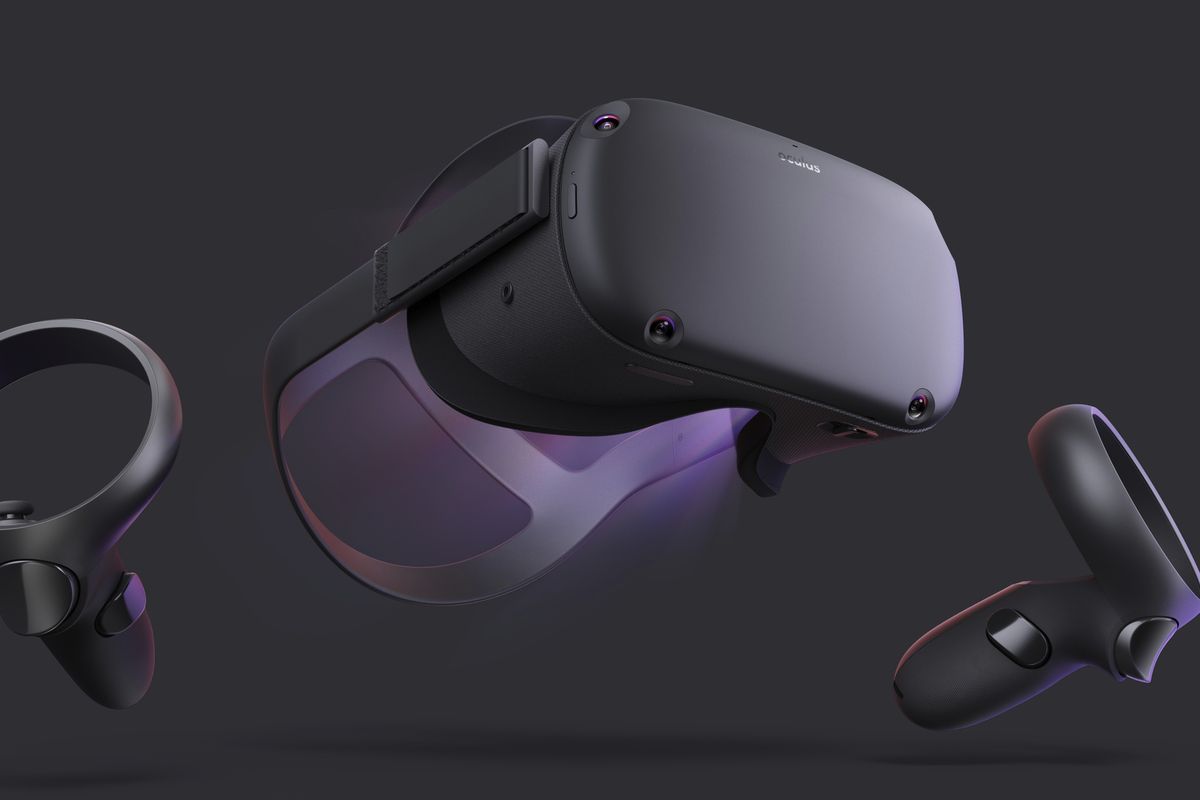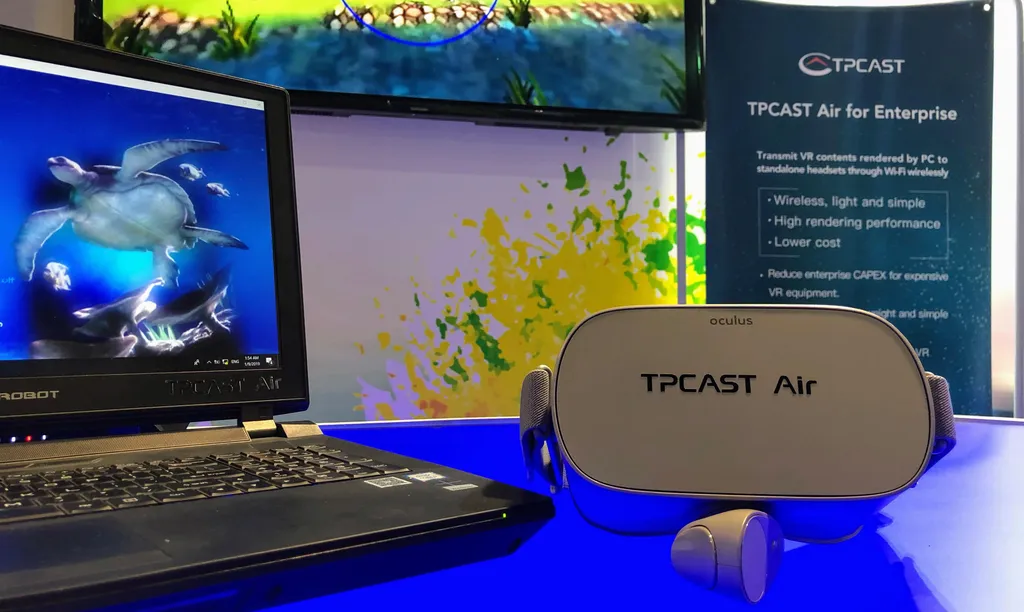When I passed the booth for TPCast during CES 2019 I didn’t initially pay it very much attention. Last year we saw a new model of their wireless adapter that enables either the Rift or Vive to cut the cord and move around rooms freely without any wired connections to a PC. It sends the data to and from the nearby PC wirelessly, but you still need to be close to a computer. It doesn’t turn them into totally standalone devices like the Oculus Quest or anything.
So on the table next to a laptop I spotted an Oculus Go. This seemed odd to me because the Go is already a standalone headset and there were no external sensors, like with Nolo, so it wasn’t a 6DOF tool either. Instead, TPCast Air is a software and USB dongle that wirelessly streams PC VR content to the Go’s display. And much to my surprise it totally works.

Now since the Oculus Go isn’t a 6DOF headset and it only has one single 3DOF controller, there is only a very limited use-case for a device like this on that headset. You can’t expect to play full games on it at all and anything that needs you to move around more than just looking up and down or side to side is a no-go (pun intended). So the demos I tried were TheBlu, a classic VR showpiece that’s entirely passive as you watch fish swim all around you, and a walkthrough demo of an apartment complex rendered in a game engine (I think it was Unity or Unreal).
So if you’re a developer that has something simple to show someone but don’t want to export and package it as a Go app or don’t want to lug around your bulky PC VR headset, then you can use a Go and TPCast Air to display it with head-tracking and give a little tease. This is designed as an affordable enterprise solution and to that end it seems to get the job done.
What makes TPCast Air particularly exciting though, from a tech perspective, is that it will support the Oculus Quest as well.

That means that you can use your Quest like normal, playing ports of games such as Superhot and The Climb, but then also enable the TPCast Air to stream over content from Steam VR. Since the Quest is a 6DOF headset with two 6DOF controllers, you’ve basically got a wireless Rift that can also be a standalone for travel. Pair it with a laptop and you’ve got a really flexible setup.
Since the two apps I tried were entirely passive and had next to zero interaction it’s hard to say whether there was any input lag or latency. During my time with TheBlu I made sure to waggle my head around from side to side and up and down to see if there would be any latency at all with the footage keeping up with my head movement and I noticed a tiny bit. Basically on the edges of my view if I turned really quickly I’d see a thin black bar that immediately vanished once I stopped turning. I think that means there is just an ever-so-slight delay between the image itself rendering and being streamed to the headset.
I’d love to try the TPCast Air on an Oculus Quest to see how it handled 6DOF content streamed to a non-PC powered 6DOF headset. Based on how well TPCast Plus and original TPCast hardware functions, I like to think that it may actually work really well. I don’t know for sure, but that’s what I’m hoping.

Since the Quest can’t plug into a PC, purchasing a TPCast Air might be the next best thing to achieve a truly hybrid headset — assuming it works well on Quest too.
Let us know what you think of the TPCast Air down in the comments below!






























